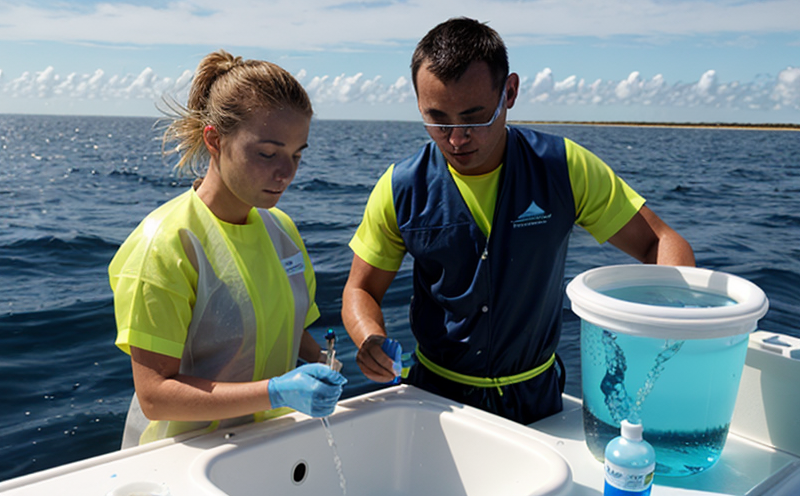ISO 11869 Trace Elements Test in Seawater
The ISO 11869 standard provides a comprehensive framework for the determination of trace elements in seawater. This service is critical for environmental monitoring, ensuring compliance with regulatory standards, and supporting research in marine science.
Trace elements play a significant role in various biological processes within seawater ecosystems. The presence or absence of these elements can influence water quality, affect marine life, and impact human health through the consumption of contaminated seafood. Therefore, accurate measurement is essential to ensure compliance with international standards such as ISO 11869.
The testing process involves several key steps. Firstly, seawater samples are collected from designated locations in the marine environment. Proper sample collection ensures that the results accurately reflect the conditions at the sampling site. The samples are then transported under controlled conditions to our laboratory for analysis. Here, they undergo rigorous quality control measures before being prepared for trace element analysis.
Trace elements such as copper, zinc, cadmium, and lead are analyzed using advanced analytical techniques like inductively coupled plasma mass spectrometry (ICP-MS). These instruments provide high sensitivity and precision necessary for detecting even minute concentrations of these elements. The results obtained from this process are compared against specified limits set by ISO 11869 to determine compliance.
Our team of experienced scientists and engineers ensures that every aspect of the testing procedure adheres strictly to international standards. This commitment guarantees reliable, accurate, and consistent data output which is crucial for making informed decisions regarding environmental protection and resource management.
In addition to providing detailed analytical results, we also offer comprehensive reports summarizing our findings along with recommendations based on current best practices in marine science and ecology.
Scope and Methodology
| Parameter | Description | Methodology |
|---|---|---|
| Sample Collection | Water samples are collected from specified locations in the marine environment. | Follows ISO 17820 for seawater sampling. |
| Preparation | The samples undergo rigorous quality control checks before being prepared for trace element analysis. | Uses industry-standard procedures outlined in ISO 6585. |
| Analytical Techniques | Trace elements are analyzed using advanced analytical techniques like ICP-MS. | Complies with ISO 17294 for trace element analysis by ICP-MS. |
| Data Analysis | The collected data is compared against specified limits set by ISO 11869 to determine compliance. | Follows guidelines provided in ISO 5725 on statistical methods for calibration and other uses. |
Benefits
The benefits of this service extend beyond mere compliance; it provides valuable insights into the health and sustainability of our oceans. By accurately measuring trace elements in seawater, we contribute to better decision-making processes related to environmental policies.
This information helps stakeholders understand potential risks associated with exposure to certain contaminants, thereby enabling proactive measures to mitigate these threats. Additionally, this service supports ongoing research aimed at understanding how changes in ocean chemistry affect marine life and overall ecosystem balance.
For quality managers, this means having access to reliable data that can guide procurement strategies or product development efforts focused on minimizing environmental impact. Compliance officers benefit from knowing they are meeting strict regulatory requirements while contributing positively towards global sustainability goals.
International Acceptance and Recognition
The ISO 11869 standard is widely recognized globally for its rigorous approach to trace element testing in seawater. Its acceptance across various countries underscores the importance placed on accurate measurement techniques within this field.
Countries around the world utilize these standards not only because they ensure consistency but also due to their scientific validity and reliability. By adhering strictly to these guidelines, laboratories like ours demonstrate our dedication to excellence in analytical chemistry.
Our commitment to quality means that customers can trust us with their most critical samples knowing that we follow internationally accepted practices without compromise. This reputation is built on years of experience working closely with various industries including government agencies, academic institutions, and private enterprises.





